Abstract
Forty children exposed to variable amounts of alcohol in utero and 40 control children were studied. All mothers had been enrolled in an antenatal programme aiming to identify and reduce alcohol use and abuse during pregnancy. Follow up was at the median age of 22 (18 to 27) months. A significant reduction in intrauterine growth was seen in children born to alcoholic mothers. Three of six children continuously exposed to high amounts of alcohol throughout fetal life showed growth retardation and physical abnormalities characteristic of fetal alcohol exposure, while infants whose mothers had stopped drinking did not suffer these effects. Psychological or behavioural disturbances were found in all but one of 13 children born to alcoholic mothers. The home environment during the first two years did not compensate for the effects of fetal alcohol exposure. Mothers classified as excessive drinkers but not abusers all reduced their alcohol consumption after the first trimester. Their children did not differ from controls with regard to physical development or behaviour but many were retarded in speech and, in addition had a more unstable family background.
Full text
PDF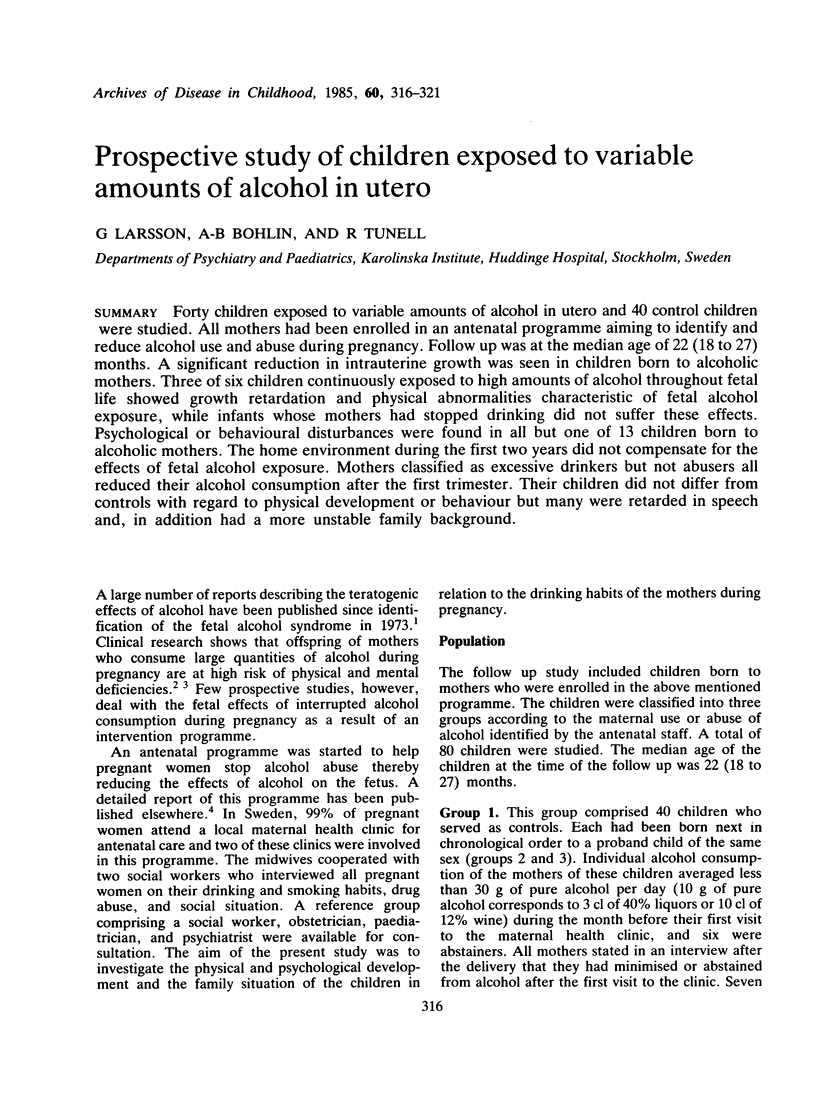
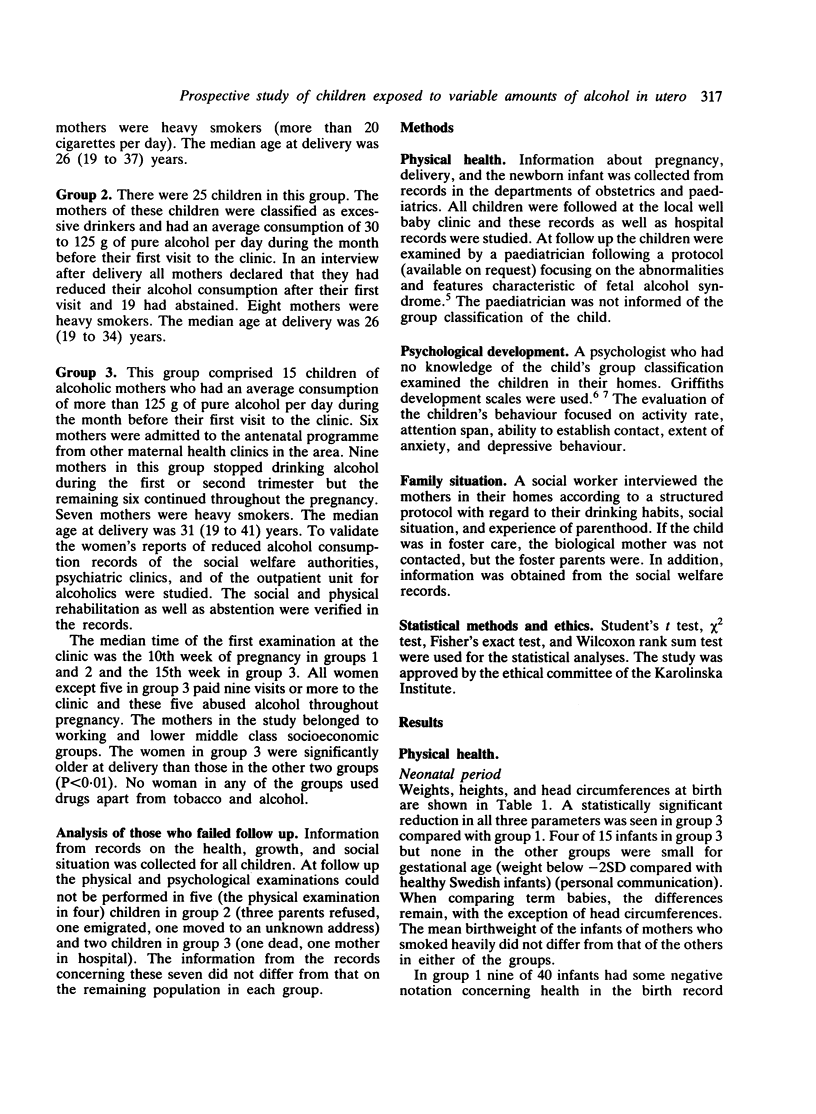
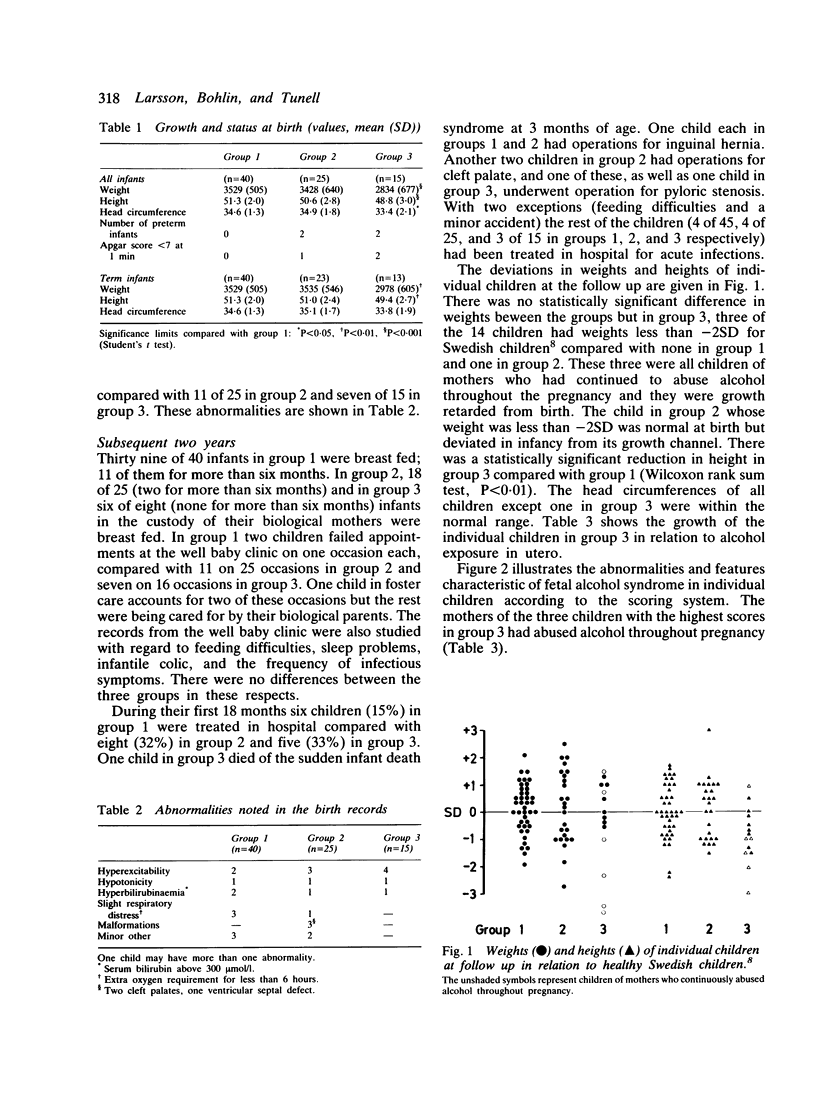
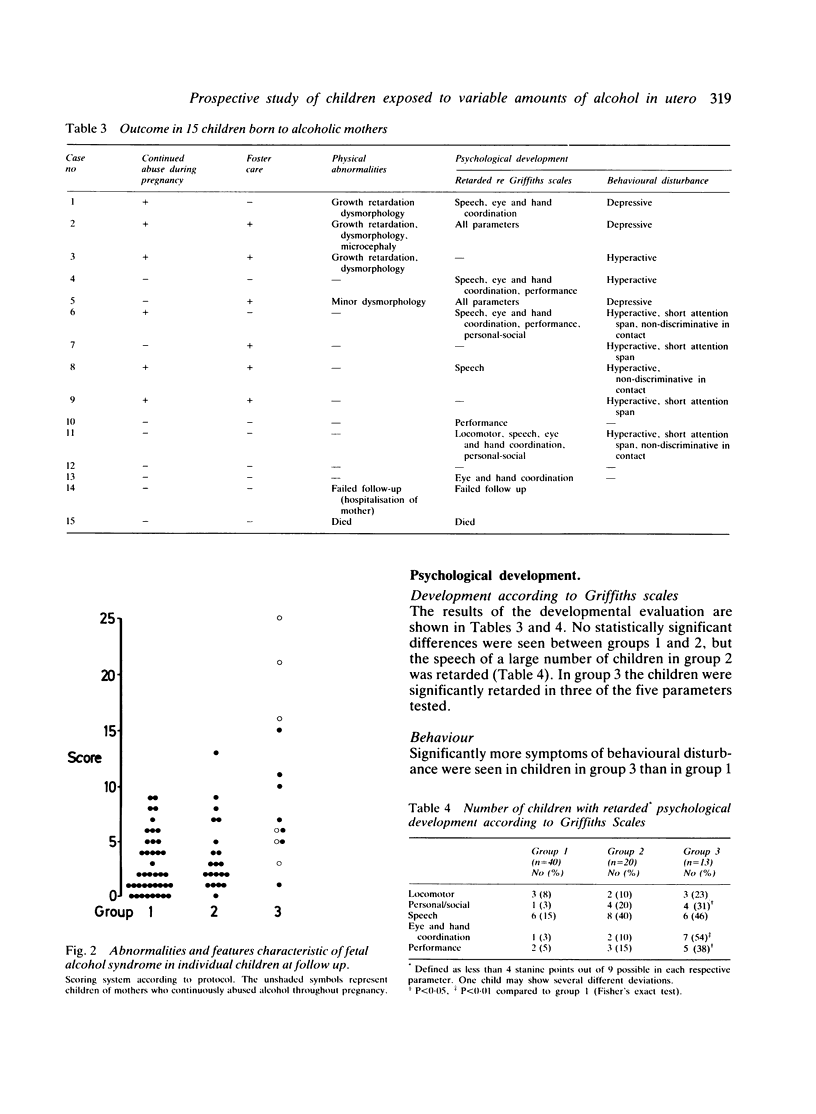
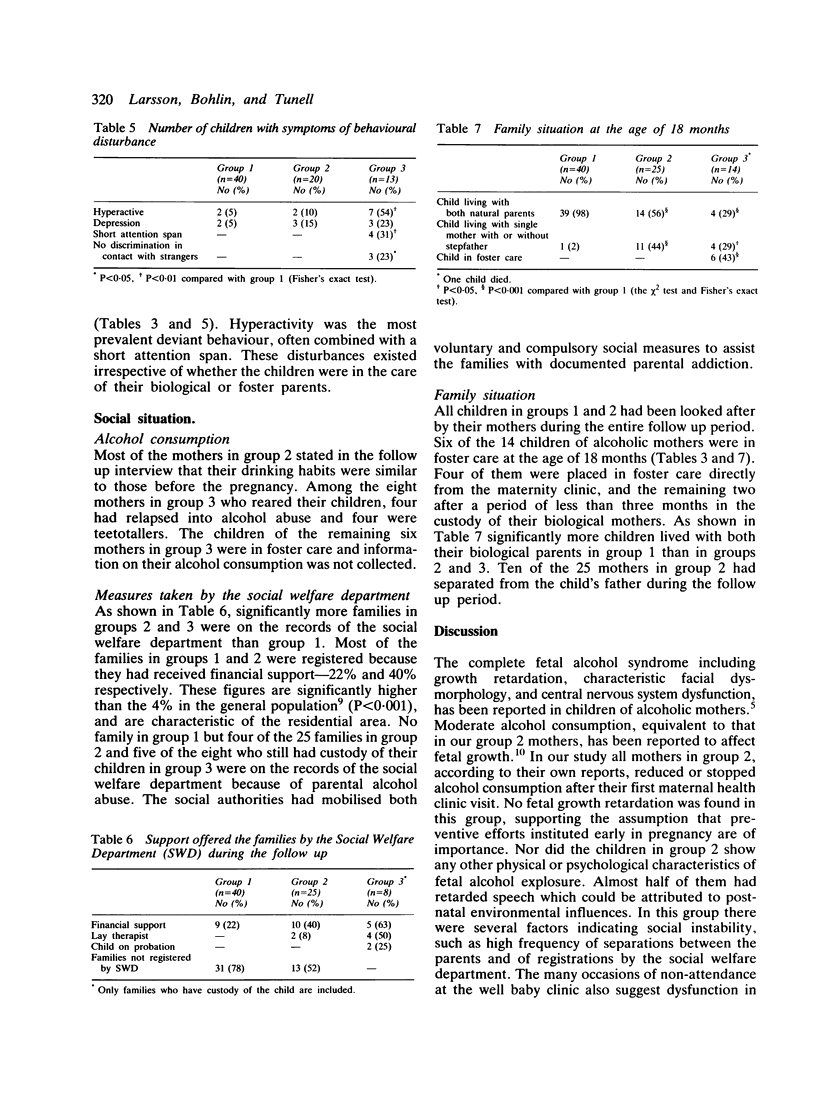
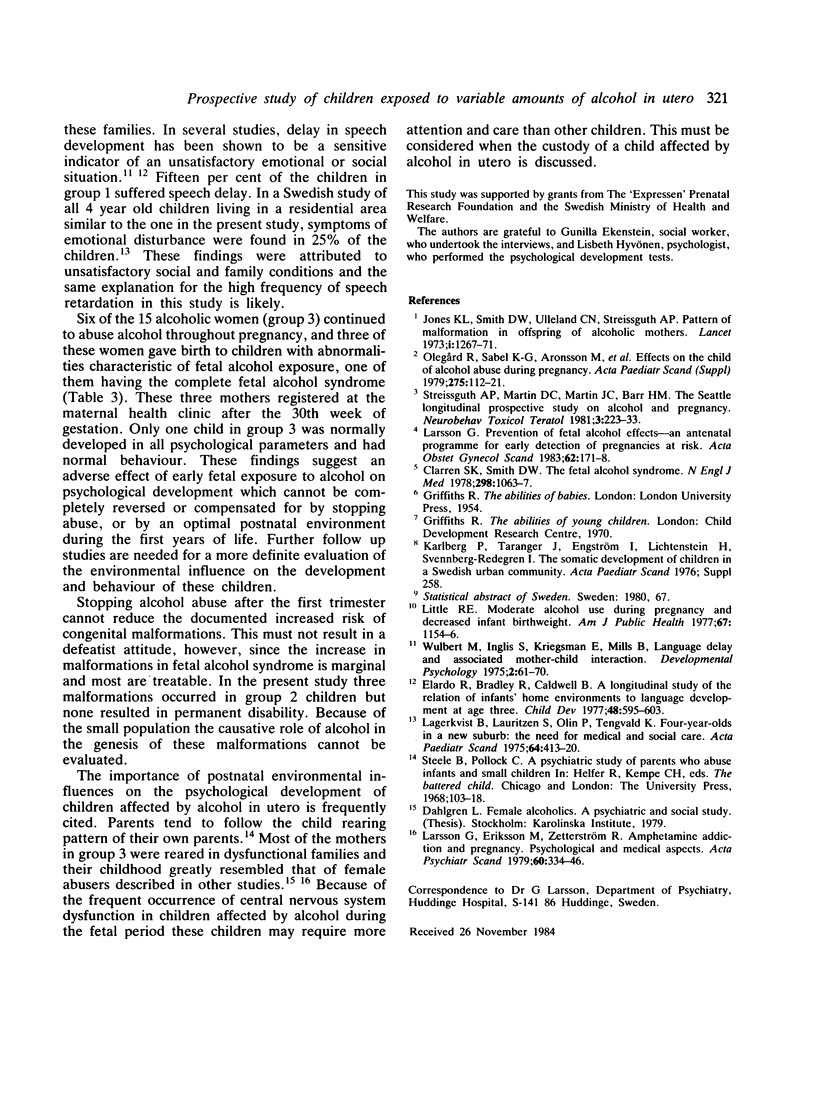
Selected References
These references are in PubMed. This may not be the complete list of references from this article.
- Clarren S. K., Smith D. W. The fetal alcohol syndrome. N Engl J Med. 1978 May 11;298(19):1063–1067. doi: 10.1056/NEJM197805112981906. [DOI] [PubMed] [Google Scholar]
- Jones K. L., Smith D. W., Ulleland C. N., Streissguth P. Pattern of malformation in offspring of chronic alcoholic mothers. Lancet. 1973 Jun 9;1(7815):1267–1271. doi: 10.1016/s0140-6736(73)91291-9. [DOI] [PubMed] [Google Scholar]
- Lagerkvist B., Lauritzen S., Olin P., Tengvald K. Four-year-olds in a new suburb: the need for medical and social care. Acta Paediatr Scand. 1975 May;64(3):413–420. doi: 10.1111/j.1651-2227.1975.tb03857.x. [DOI] [PubMed] [Google Scholar]
- Larsson G., Eriksson M., Zetterström R. Amphetamine addiction and pregnancy. Psycho-social and medical aspects. Acta Psychiatr Scand. 1979 Oct;60(4):334–346. doi: 10.1111/j.1600-0447.1979.tb00283.x. [DOI] [PubMed] [Google Scholar]
- Larsson G. Prevention of fetal alcohol effects. An antenatal program for early detection of pregnancies at risk. Acta Obstet Gynecol Scand. 1983;62(2):171–178. doi: 10.3109/00016348309155786. [DOI] [PubMed] [Google Scholar]
- Little R. E. Moderate alcohol use during pregnancy and decreased infant birth weight. Am J Public Health. 1977 Dec;67(12):1154–1156. doi: 10.2105/ajph.67.12.1154. [DOI] [PMC free article] [PubMed] [Google Scholar]
- Streissguth A. P., Martin D. C., Martin J. C., Barr H. M. The Seattle longitudinal prospective study on alcohol and pregnancy. Neurobehav Toxicol Teratol. 1981 Summer;3(2):223–233. [PubMed] [Google Scholar]


